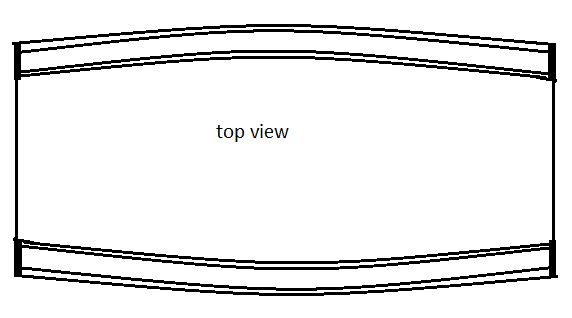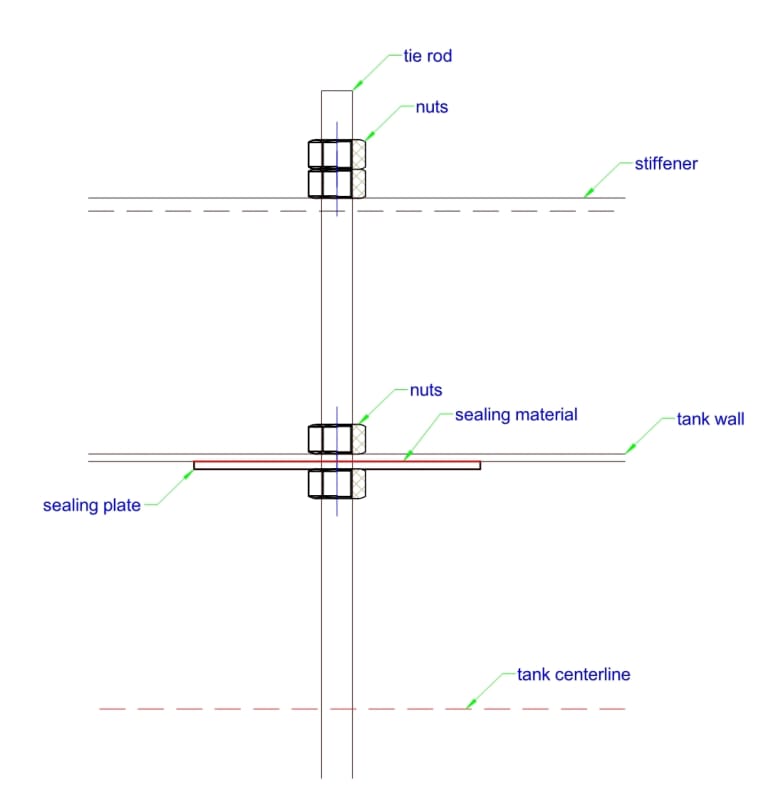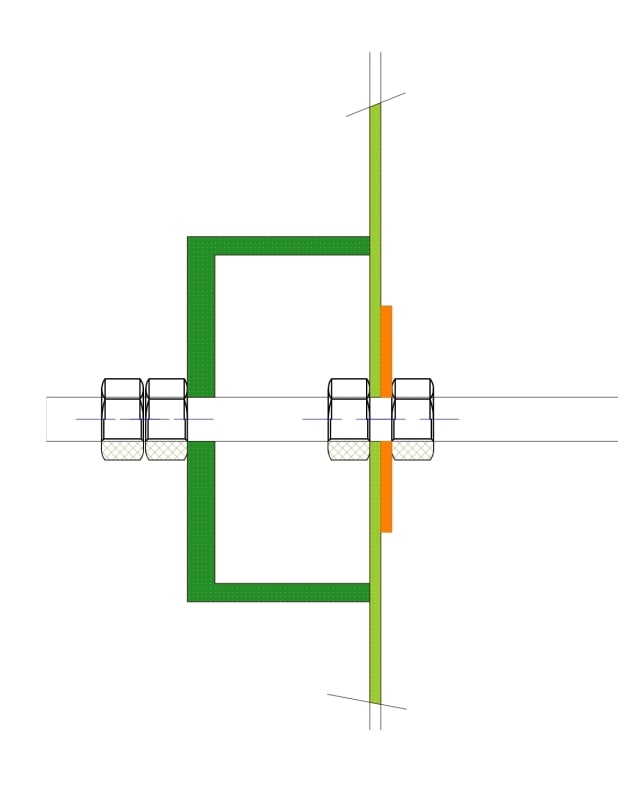Yazan Atoum
Structural
- Nov 4, 2016
- 19
Hi guys,
I have a water tank with a depth of 4 meter and planar dimensions of 9X4 meter squared
the problem when it is filled with recycled water to a depth of 3.5 m, what happened in reality that the tank bloat and the walls tend to bend to the outside, I am thinking of a retrofitting method, which is using steel beams to brace the tank from the inside at two levels , all connections will be hinged and no weld to be used for corrosion prevention purposes.
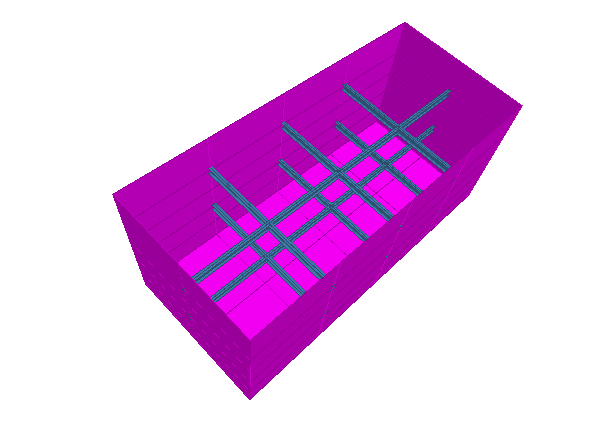
I check the beams for tension and the plate for von mises stresses
I thought of using IPE200 beams screwed to the water tank walls with double angles, the screw is similar to what is used in sheet to purlins connection, I think the bolts should be qalvanized and a special material should be applied to prevent any leakage from the holes.
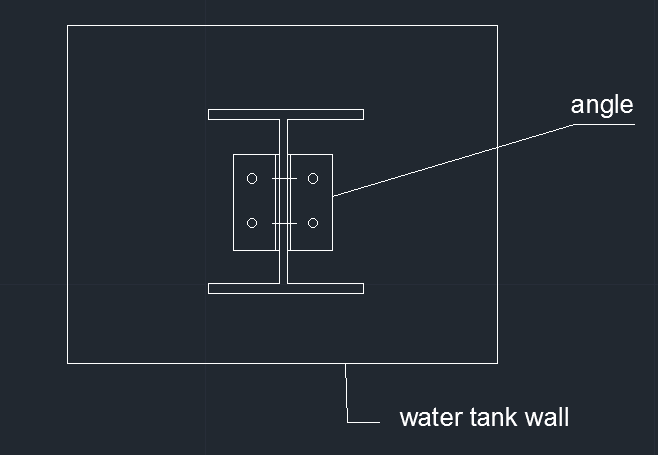
I am worried about what i came with, do you have any concerens or shall I proceed?
I have a water tank with a depth of 4 meter and planar dimensions of 9X4 meter squared
the problem when it is filled with recycled water to a depth of 3.5 m, what happened in reality that the tank bloat and the walls tend to bend to the outside, I am thinking of a retrofitting method, which is using steel beams to brace the tank from the inside at two levels , all connections will be hinged and no weld to be used for corrosion prevention purposes.

I check the beams for tension and the plate for von mises stresses
I thought of using IPE200 beams screwed to the water tank walls with double angles, the screw is similar to what is used in sheet to purlins connection, I think the bolts should be qalvanized and a special material should be applied to prevent any leakage from the holes.

I am worried about what i came with, do you have any concerens or shall I proceed?



